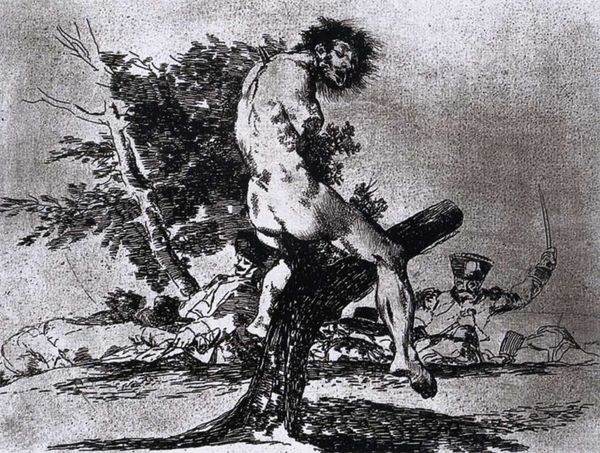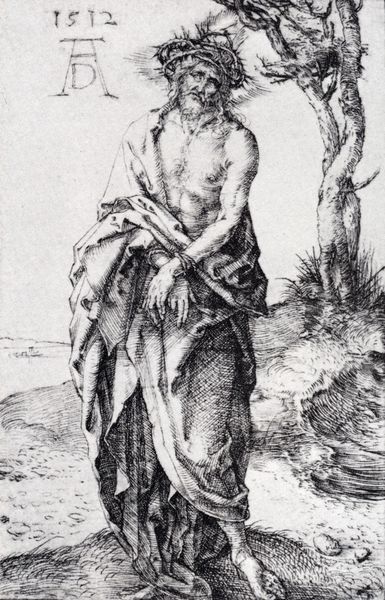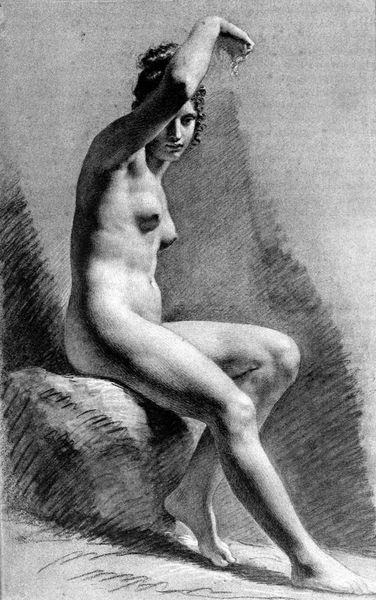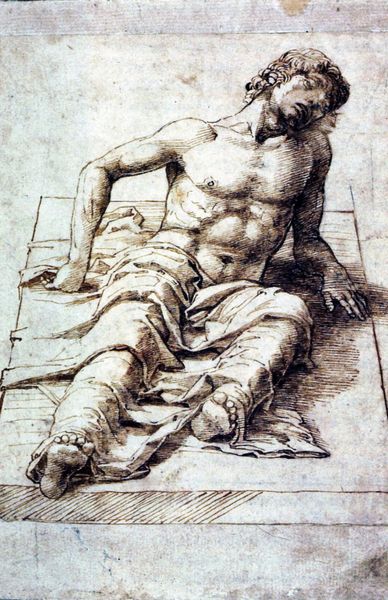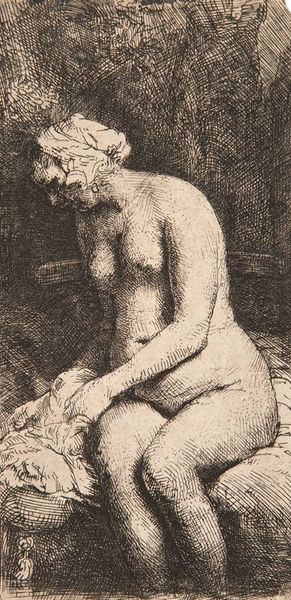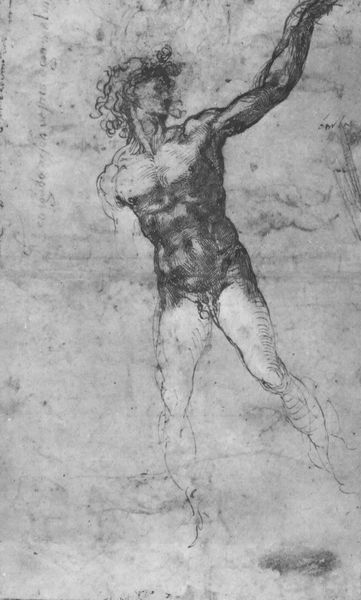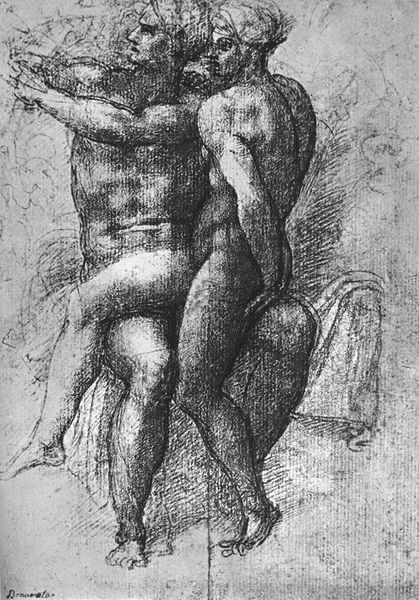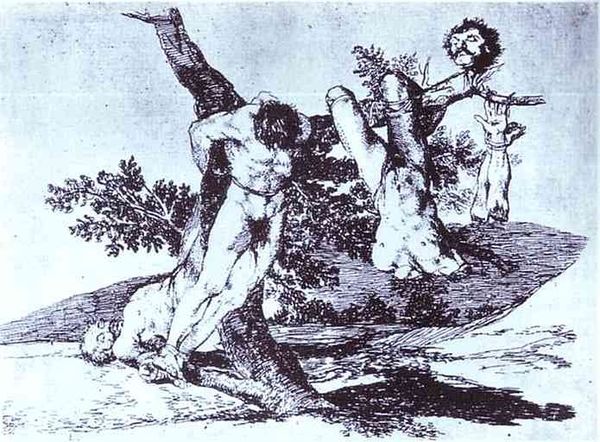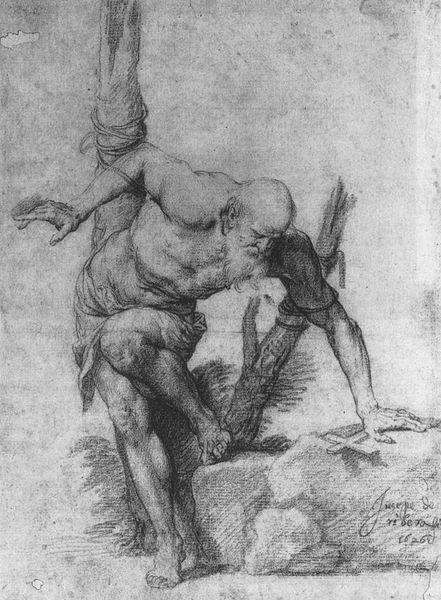
Study for St. John in the Wilderness 1510
0:00
0:00
leonardodavinci
Museo Baroffio e del Sacro Monte, Varese, Italy
drawing, charcoal
#
portrait
#
drawing
#
charcoal drawing
#
figuration
#
charcoal
#
history-painting
#
italian-renaissance
#
nude
#
christ
Dimensions: 24 x 18 cm
Copyright: Public domain
Editor: We’re looking at Leonardo da Vinci’s “Study for St. John in the Wilderness,” created around 1510 using charcoal. There's such a brooding, contemplative atmosphere that comes from the stark contrast of the charcoal. How do you read this piece? Curator: Primarily, the work functions as an essay in form. Notice Da Vinci’s masterful use of sfumato, the blurring of lines to create subtle gradations of light and shadow. The body emerges not through distinct outlines, but through a manipulation of tonal values that give the figure a hazy, ethereal presence. How does this contribute to your interpretation of the figure's psychological state? Editor: It makes him feel very internal, as though he's existing both in the wilderness and within himself. Is that blurring deliberate to communicate something more than physical form? Curator: Absolutely. Da Vinci employs this blurring not only to simulate light and air, but also to obscure any distinct facial features or details that would anchor the figure in the mundane. The focus, instead, is on the interplay of light and shadow across the musculature, thereby creating an abstract composition. It becomes an exploration of texture, contrast and, most importantly, form itself. Editor: That's fascinating, viewing the saint through that lens. I was getting so caught up in trying to 'read' his expression. Curator: Indeed. This particular piece is less concerned with narrative or literal representation, and far more preoccupied with the possibilities of charcoal as a medium to explore form. Have your perceptions of the work shifted at all now? Editor: Absolutely, I’m now seeing the interplay of light and shadow not as descriptive, but as compositional tools. Thanks for this fresh perspective! Curator: A pleasure. Looking past the figure and toward the formal components of a work allows for an entirely different dimension of analysis and enjoyment.
Comments
No comments
Be the first to comment and join the conversation on the ultimate creative platform.
